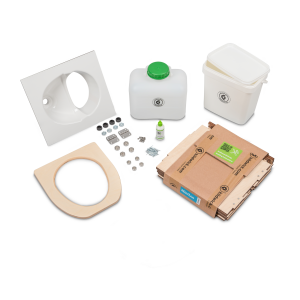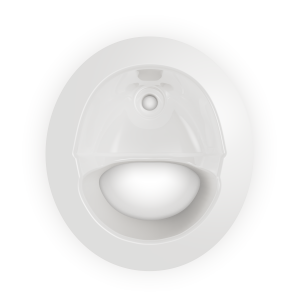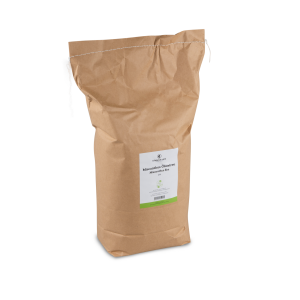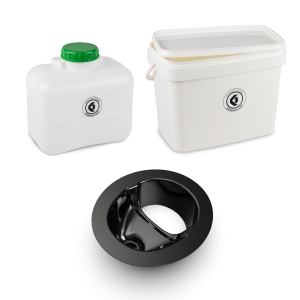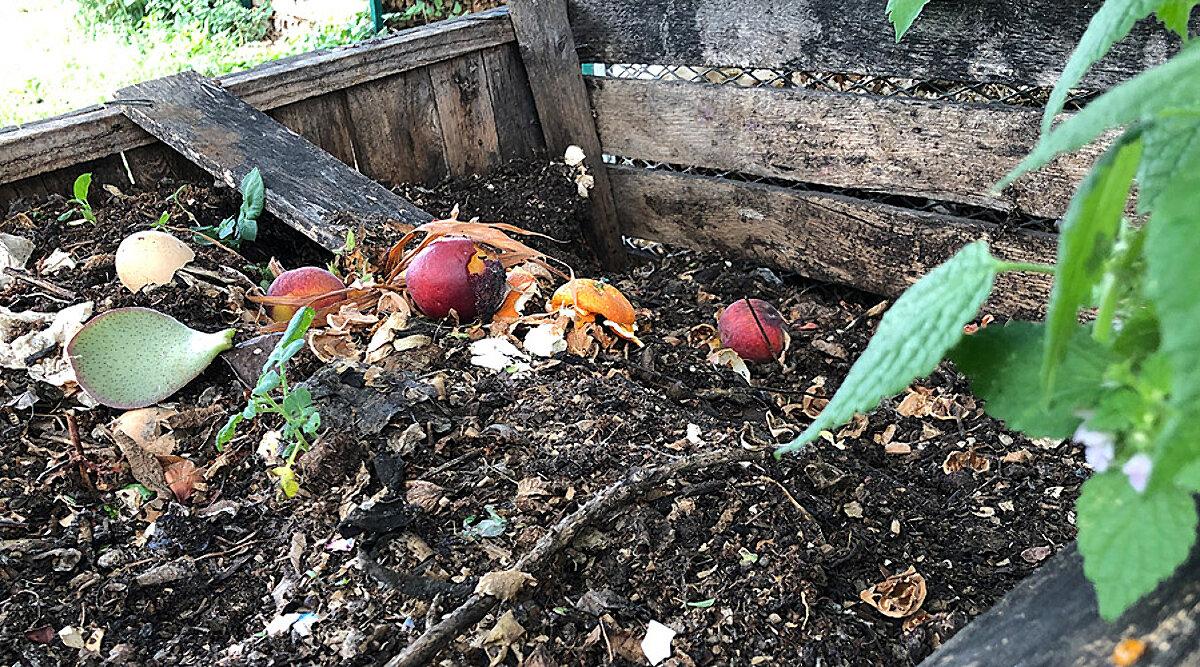.jpg)
The metabolic process of nature
During composting, organic matter is decomposed by organisms (fungi, bacteria, etc.) and soil organisms (such as worms, woodlice and beetles) and transformed into nutrient-rich soil. But how does it work, especially when composting human excrements?
The rotting time of excrements normally lasts several years. Because the organisms and living creatures are mainly active in warm temperatures. Cold, dryness or dampness slows down this process. The decomposition takes place in several stages. Human faeces are a food source for many organisms. These are primarily bacteria and fungi, but also beetles and earthworms play their part if the base material is slightly pre-rotten.
What should be considered when self-composting faeces
When self-composting feces there are a few basic rules to follow. Our excrements are not 100% safe for epidemic hygiene. While properly composting the following things happen:
- disease germs are largely killed
- pollutants are mostly harmful
- the accumulated volume is reduced
- nutrients are retained
- circuits close and the compost soil can be used as a fertilizer or soil conditioner
For a successful composting process you should pay attention to the following points:
The shredded organic material should not be too large. The smaller the starting material to be decomposed, the faster the composting takes place.
Excrements should not land "pure" on the compost, we recommend adding additional bioorganic mass (e.g. coffee grounds, leaves, grass clippings). When using the dry composting toilet, the solids are mixed with litter - this is already a perfect starting point for composting.
Make sure that the compost material is neither too moist nor too dry and that enough oxygen is supplied to the material. So do not stack too tightly, but as loosely as possible. Even a temporary loosening of the compost ensures that deeper layers are also supplied with sufficient ventilation.
The pH of the compost should not be too acidic (litmus strip note). With regard to the pH value, you have probably already read our notes on the correct handling of the solids container.
There are three ways to compost in the right way:
- cold composting
- composting with worms
- hot composting
These three methods can be thought of as follows:
Cold composting
Everyone has probably seen this procedure before - it's the classic compost heap. Here, organic materials are collected and exposed to the weather conditions. Normally, temperatures not higher than 20-40 degrees Celsius develop, so that the process of decomposition proceeds relatively slowly. The biomaterial is piled up layer by layer, good aeration should be given. Possible pathogens (e.g. of plants or also worm eggs) are not completely destroyed.
Composting with worms
In this process earthworms are used, particularly suitable is the red dung worm. It can eat and digest 1.5 times its own body weight per day. Since worms inherently dig through everything, they are best suited for breaking down organic matter. However, urine should not get into the worm composter because the contained ammonia can kill the hard-working worms. Even with this method, the pH should be as neutral as possible. Faecal worms, even if the name suggests otherwise, do not like direct contact with human feces. Again, care should be taken that enough other biomass is added. Composting - using worms - creates a lot of moisture, this should be able to drain to a certain extent. For the animals, it should not be too dry, the worms feel most comfortable at temperatures between 10 and 30 degrees.
Hot composting
Hot composting is all about three important phases:
- construction phase
- rebuilding phase
- reduction phase
The composting time is about 20 days and the compost heap should be at least 1.5 meters high. On the first day, carbon and nitrogen-containing material is stacked in thin layers. On the fourth day, the material should be turned from the outside inwards. Approx. the sixth day, a temperature of 55-65 degrees should prevail inside the heap. This can easily be checked with a thermometer. From now on, the compost heap should be turned every two days. Always from the outside to the inside. The temperature slowly drops again. After the mentioned 20 days everything should be decomposed. Due to the resulting high temperatures pathogens and worm eggs are also killed.
